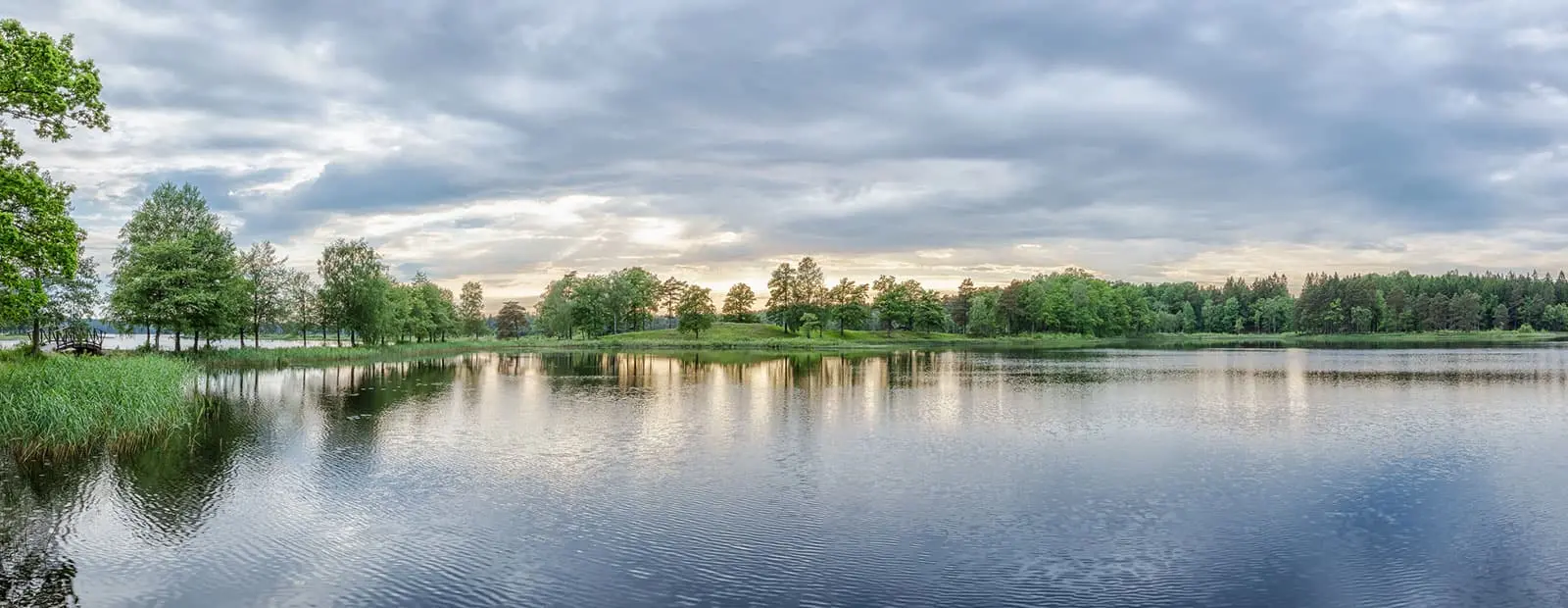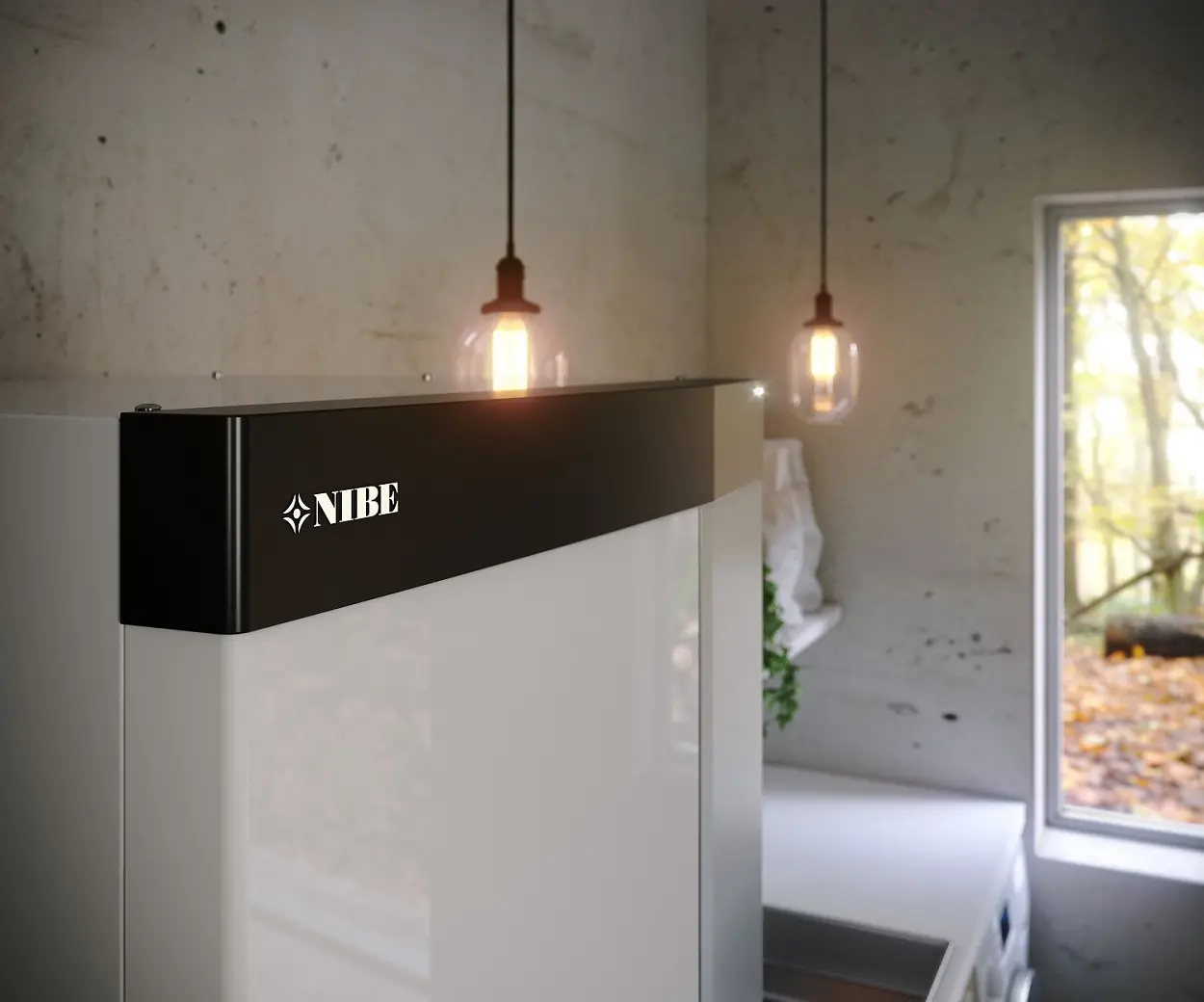Here at NIBE, we appreciate heat pumps can be confusing and that this can lead to scepticism regarding the technology. Our experts are here to bust some of the common misconceptions around heat pumps and their installation so you can be more confident when investing in a heat pump to provide cleaner, cheaper heat for your home.
Clean, efficient solutions such as air source heat pumps (ASHPs) represent the future of domestic heating systems. Plus, thanks to the government’s Boiler Upgrade Scheme, the cost of installing a heat pump system can be reduced through a £5,000 grant.
MYTH 1: Air source heat pumps are loud
Most heating products emit some low-level noise, including traditional gas boilers. In fact, boilers have a similar noise level to modern air source heat pumps.
Heat pump technology is constantly evolving, and many units now come with intelligent compressor controls, which enable systems to run as quietly as possible. NIBE heat pumps are also equipped with a silent mode. This allows the system to operate at a lower volume when needed; for instance, at night.
Effective installation is critical when it comes to minimising the sound a system makes. It is important that an MCS 020 (Microgeneration Certification Scheme) sound pressure calculation is completed to comply with planning regulations.
The heat pump unit must also be sited on a secure base. NIBE provides air source heat pumps with adjustable feet as standard, as well as additional antivibration mounts for floor standing units to reduce noise levels.
MYTH 2: An air source heat pump installation takes up a lot of space
Inside the house, an air source heat pump typically requires only slightly more space than a gas boiler. You’ll need to reserve an area for a hot water cylinder, too. The outdoor unit can be as small as 1m wide, though the dimensions tend to vary depending on the size of the house.
When positioning your ASHP, a clearance zone around the unit is required to enable the free movement of air. This is essential to avoid the recirculation of the cooler air which the heat pump usually dissipates from the front of the unit.
These clearance distances are manufacturer specific but, as a rule of thumb, allow for at least 1m in front of the heat pump unit, plus 50mm to 300mm to the rear and sides.
MYTH 3: It’s difficult to find good heat pump installers
The UK has a workforce of 120,000 heating engineers who install 1.7 million heating systems each year – and the fundamental skills for boilers and heat pumps are the same.
More and more engineers are retraining and joining schemes such as NIBE’s Pro Installer programme – and we expect the base of installers to continue to grow quickly to match demand for heat pumps.
MYTH 4: I’ll need to replace all my radiators when installing a heat pump
This is not always the case. In fact, many homes with radiators are already suitable for the installation of a heat pump.
Government figures state that around 55% of radiators may need upgrading when replacing a boiler with a heat pump*. The only way installers can confirm if radiators need replacing or upgrading with larger panels, however, is through full room-by-room heat loss calculations.
In houses insulated to a decent standard, the work should be minimal. Many properties require only minor changes, such as the correct balancing of radiator valves to ensure an even distribution of heat.
Our NIBE Pro Installer programme offers comprehensive low flow temperature training. This ensures your accredited heating engineer can provide the most accurate design and quote for your project.
MYTH 5: Air source heat pumps won’t work if it is cold outside
Whilst this seems a fair assumption, given air source heat pumps draw heat from the atmosphere, it is not true.
Heat pumps can work efficiently in temperatures of down to -25°C. This is because 0°C is different to absolute 0 (zero kelvin, or -273°C) where there is no heat at all. At any temperature above absolute zero, there is technically some heat to be utilised.
NIBE heat pumps are built for Scandinavian climates, which are colder than we experience in the UK. So, you can be confident that your air source heat pump will continue to keep your home comfortable and warm throughout the winter months.
MYTH 6: I will need to completely replace heating system pipework
There is a common misconception that, when installing a heat pump, existing microbore pipework will need to be ripped out and replaced to enable its operation. This is based on the notion that the pipework is too narrow to deliver the heat required to radiators at the flow rate of the heat pump system.
This is not always the case, and a full room-by-room heat loss calculation will determine the suitability of the existing pipework and confirm the steps that need to be undertaken.
Our NIBE Pro Installer Scheme includes heating systems design training to ensure you are recommended the most efficient heat pump system, tailored to the needs of your home.
MYTH 7: Air source heat pumps don’t provide efficient hot water
Heat pumps partner with hot water cylinders to cover both your heating and hot water needs. They can also be used as part of highly efficient thermal storage setups.
For anyone worried about lack of room, there are new space-saving solutions being developed to allow cylinders to be stored in less commonly used areas, such as lofts and garages.
MYTH 8: SCOP and COP are the same
These acrononyms refere to Coefficient of Performance (COP) and Seasonal Coefficient of Performance (SCOP).
The COP figure applies only to a particular outdoor and flow temperature at a particular point in time. For example, in the summer your air source heat pump will have a really high COP when producing hot water. But in winter the COP will be lower, as the outside air is cooler and the heat pump will use more energy to heat the hot water cylinder.
SCOP is an average measurement that demonstrates how effective the heat pump is on an annual basis. So, the SCOP is the best indicator of how your ASHP is performing all year round.
NIBE’s latest S2125 ASHP performs very well in both summer and winter months, producing a SCOP of 4.8 with a flow temperature of 35°C, and 3.59 with a flow temperature of 55°C.
In a nutshell, for every £1 of electricity used to run the heat pump you will gain £3.80 / £2.59 worth of heat. By comparison, modern gas boilers run at around 87%-91% efficiency, so up to 13p of each £1 you spend heating your home is lost in the boiler emissions.
More heat pump advice
Heat pumps remain a cost-effective long-term solution for heating homes, and NIBE’s best in class products provide optimised savings whilst delivering powerful and quiet heat with a low environmental impact.
Our NIBE Pro Installer Partnership Scheme ensures that our installers are MCS certified and are well equipped to deliver heat pump systems that operate seamlessly all year round across the country.
Discover more home tips with BuildIt
Read more


